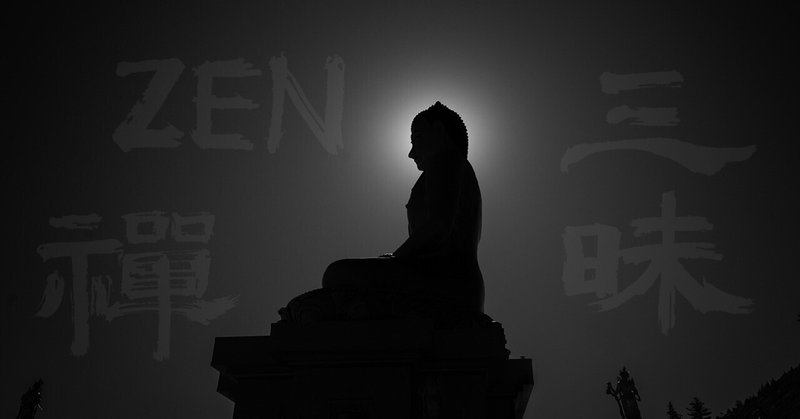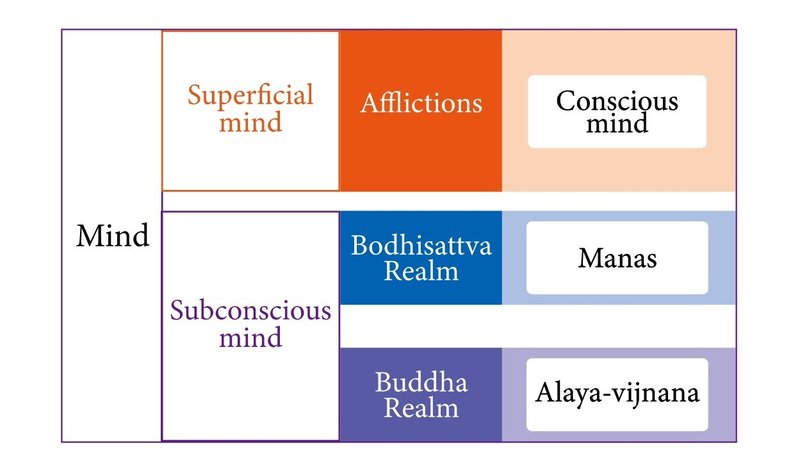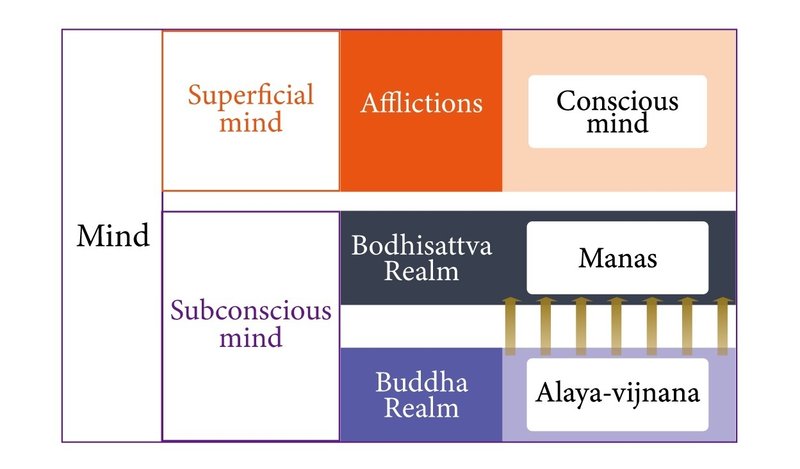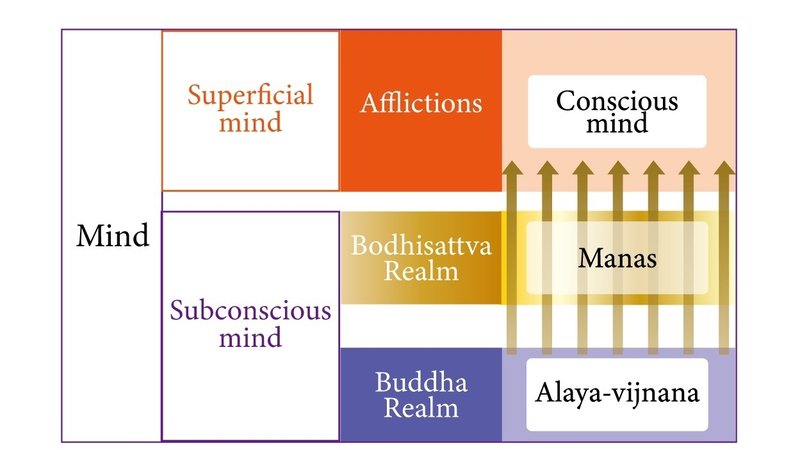
Western Zen and Buddhist Zen
Zen, Meditation, and Mindfulness
Zen is a basic form of practice performed in the Buddhist sects known as Zen Buddhism (Sōtō Zen, Rinzai Zen, etc.).
In recent years, it has gained attention in the West, where "ZEN" is recognized as a term overlapping with concepts like meditation and mindfulness. It is being increasingly practiced in a secular context.
In the United States, some major IT companies have incorporated ZEN into their employee programs. However, they adopted only the methodology of Zen, without imparting any Buddhist education. It is said that practicing ZEN can lead to visible effects such as enhanced creativity, increased productivity, and decreased turnover rates.
Although this is just one example, ZEN in the West generally seeks only its practical effects, distanced from its original form rooted in Buddhism.
In this article, I aim to explore what the original Zen, discussed in a Buddhist context, is like, and eventually, present its essence that can transcend even the framework of Buddhism.
Zen as a Form of Practice Established by Bodhidharma
As mentioned earlier, Zen is a key practice in sects categorized as "Zen Buddhism," like Sōtō Zen and Rinzai Zen. The founder of Zen Buddhism is the renowned Bodhidharma (Daruma Daishi), a figure from around the 6th century who is the 28th successor in the Buddhist lineage from Buddha. Though of Indian origin, he went to China and established "Zen."
"Zen" is an abbreviation for "Zen-na," a transliteration of the Sanskrit word "dhyana," which means "concentrating the mind to seek the truth."
The foundational philosophy of Zen is said to be outlined in four phrases:
1. "Furyū monji/不立文字" (Not reliant on written words): The state of enlightenment cannot be expressed by words.
2. "Kyōge betsuden/教外別伝" (Special transmission outside the scriptures): The teachings of Buddha are transmitted from heart to heart.
3. "Jikishi ninshin/直指人心" (Point directly at the human mind): The way to seek the truth is simply to look within oneself.
4. "Kenshō Jōbutsu/見性成仏" (Seeing one’s nature and becoming a Buddha): Finding the Buddha nature within yourself is becoming your true self.
Spread of Zen in the West
Zen from Japan was first introduced in the United States at the 1893 World's Columbian Exposition in Chicago, where the head priest of Engaku-ji Temple in Kamakura, Sōen Shaku, gave a speech.
At this time, the person who was interpreting the speech was Daisetsu Suzuki, who later wrote about Japanese Zen culture in English and widely introduced it to the Western world.
His seminal works, 'Living by ZEN' and 'Zen and Japanese Culture,' were published in 1950 and 1959. Afterward, a ZEN boom occurred in America during the 1960s. Young Americans began to seek guidance in Zen from Shunryū Suzuki, a Sōtō Zen monk in San Francisco.
Shunryū later founded the San Francisco Zen Center, making significant contributions to the spread of Zen. His book, 'Zen Mind, Beginner’s Mind,' was a favorite of Apple's founder, Steve Jobs.
In Europe, around 1967, a Sōtō Zen monk named Taisen Deshimaru began missionary activities. He established numerous Zen dojos, primarily in France and authored a multitude of books.
Meanwhile, in Germany, a form of "Christian Zen" advocated by Catholic priest Hugo Lassalle gained attention.
"Christian Zen" is a ZEN practice that has been stripped of its Buddhist elements so that it can be practiced by Christians. Because Zen is a "practical means" devised by Buddha to end suffering, it could be integrated into Christianity.
Recently, due to the efforts of Vietnamese Zen monk Thích Nhất Hạnh in popularizing "mindfulness," Zen-like practices are gaining even more attention in the West, and are being "re-imported" back into Japan.
However, as initially mentioned, most of these have been methodized and have significantly transformed from their original form rooted in Buddhism.
Samadhi: The Origin of Zen
Although it may be repetitive, it's important to note that Bodhidharma, the founder of the Zen sect, is the 28th successor in the lineage of Buddha. Therefore, to deeply understand Zen, it is necessary to trace back to its origin, which is Buddha himself.
It is a well-known story that Buddha attained enlightenment while meditating under the Bodhi tree. In the Threefold Lotus Sutra, there are two places where this matter is directly mentioned:
"I sat under the Bodhi tree for six years and attained anuttara samyak sambodhi."
"Initially, I sat under the Bodhi tree, contemplated, and meditated for 21 days."
Slightly digressing, the term "Zen meditation" appears in the threefold Lotus Sutra, but the term "Samadhi" is overwhelmingly more frequent. Like "Zen," it is also a transliteration of the Sanskrit term " Samādhi."
Though I lack specialized knowledge in etymology, my impression is that while "Zen" emphasizes the "act" of unifying the mind, " Samadhi" implies a unified "state."
Both Zen and Samadhi share similar concepts, but since my study of Buddhism is mainly through the Threefold Lotus Sutra, I prefer using the term "Samadhi" for what Buddha did under the Bodhi tree.
Now, let's explore further what Buddha did while sitting under the Bodhi tree.
What Buddha Did Before Achieving Enlightenment through Samadhi
After renouncing his worldly life, Buddha practiced under various Brahminic teachers for six years and later took up ascetic practices before entering Samadhi under the Bodhi tree.
While in Samadhi, Mara (the demon) appeared to disrupt Buddha's state of concentration. This confrontation has been depicted as temptations by beautiful women and attacks by demonic entities.
Initially, I thought these descriptions were metaphorical. However, as I practiced Samadhi, I felt that these experiences were perceptually real, similar to the vivid images conjured up when hearing stories as a child.
It feels as if you've entered the world of the story, witnessing the events up close. Although you're not seeing it with your naked eye, you can not only experience the visuals but also hear the sounds and sense the smells.
This creates a vivid experience that makes you realize that "this world exists," just like the real world does. I believe humans are inherently equipped with the ability to perceive things in such a manner.
But unfortunately, kids who once looked at clouds and thought, "That looks like cotton candy, it must be delicious," or "It would be fun to ride on that cloud and travel the world," eventually only see them as "cumulonimbus clouds" or "droplets of water and ice."
Even among adults, there are a rare few who occasionally look at the rainy sky and see it as "the Dragon God making it rain." However, even when they perceive it this way, opportunities to share such a viewpoint are scarce.
I've gone off-topic a bit again. Now, back to Buddha's Samadhi.
After overcoming Mara, Buddha continued in Samadhi. That point is illustrated by the following passage I quoted earlier.
"Initially, I sat under the Bodhi tree, contemplated, and meditated for 21 days, contemplating the concept of "Thusness" or "Suchness."
"The term 'Thusness' or 'Suchness' refers to the 'Dharmadhatu,' which, put simply, is the realm to which the human soul belongs."
In Japan, it has long been said that "if you lie, you will fall into hell and Yama Buddha will pull out your tongue. This hell is a part of what Buddha contemplated: the Dharmic world where souls reside.
Over three weeks, Buddha delved deep into the relationship between these Dharmic worlds and humanity, discovering the laws and principles that later became Buddhism.
To summarize, the main points of his discoveries were:
1.Souls do exist.
2.Depending on how one lives as a human, one's soul can either be punished or rewarded.
Considering what he has accomplished, when asked "What is Samadhi?", it can be said to be "re-experiencing the discoveries of the Buddha." In other words, it is about opening a third eye that is not a physical eye, but the eye of wisdom that sees through the truth, and perceiving the Dharmadhatu.
The ultimate goal of Samadhi is not merely to increase concentration or reduce stress.
If we discuss the goal of Samadhi in a religious context, it involves a shift in the way of living—from thinking that the world visible to the naked eye is everything (Materialism) to living centered on spirituality and the soul (Spiritualism).
In more general terms, it can be summed up in the phrase "living with care for the soul."
The Method to Perfect Samadhi
According to the example set by Buddha Shakyamuni, perfecting Samadhi is not simply a matter of sitting down. It's about fighting and overcoming what is referred to as "Mara of Afflictions" or "Klesha-Mara."
In Buddhism, what kind of transformation does one's mind undergo when one overcomes these afflictions to perfect the state of Samadhi?
I’d like to examine this question by borrowing a mind-structure model called "The Theory of Eight Consciousnesses" explained in Yogacara(one of the genres of Buddhism). I will simplify the theory substantially, so please be aware that my explanation might differ from the original Yogacara texts.
Yogacara outlines a three-layer structure of the mind.
The superficial layer is the 'conscious mind,' which we are usually aware of. It not only operates in sync with our five senses but is also influenced by the deeper unconscious realm.
In the deeper layers of the mind are the 'Manas' and 'Alaya-vijnana.' The Manas consciousness is considered to be the realm of Bodhisattvas, while the Alaya-vijnana consciousness is the realm of Buddhas, an area that could be referred to as "conscience."

Human minds are tainted to varying degrees. This taint appears in Manas. When Manas is tainted, the workings of Alaya-vijnana, which can be regarded as the will of the Buddha, are obstructed and become less likely to be reflected in conscious thoughts.

These taints are the aforementioned afflictions. When these afflictions obstruct the workings of Alaya-vijnana, humans become self-centered. This is due to our animalistic nature.
For example, if a rock is about to hit you in the head, you instinctively dodge it. Humans are programmed to protect themselves. It's a necessary function for survival. However, when it comes to the realm of psychology, this instinct can sometimes lead to harmful actions.
For instance, if a traffic accident occurs and you hit someone with your car, you might flee the scene. Or when you make a mistake at work, you might lie, cover it up, make excuses or blame others. These are scenarios we encounter daily.
To purify Manas means to respond correctly when faced with such uncomfortable and inconvenient stresses, instead of resorting to self-defense mechanisms. This is the state when the workings of Alaya-vijnana rise to consciousness unhindered. Overcoming the "Klesha-Mara" means achieving this state.

The Increase of Altruism When the Mind is Purified
Let’s consider what happens when the mind is purified.
As seen in the previous example, when thoughts from the Alaya consciousness begin to rise to the surface, self-centeredness diminishes. Accompanying this is a strengthening of altruism, which is the exact opposite of self-centeredness.
The vector of consciousness that was solely focused on oneself starts to turn towards others in the outside world. In other words, you start thinking in ways that are beneficial for people and society, and you may have ideas that can be helpful to the world. This is what Buddhism refers to as the functioning of 'wisdom.'
The wisdom that one gains through the practice of Samadhi is precisely this.
Bodhidharma, the founder of the Zen tradition, spoke similarly in the Two Entrances and Four Practices:
"If you know the degree of completion of 'Dana paramita' (perfection of giving), you'll also know the degree of completion of the other five paramitas."
It means that one's level of spiritual development can be gauged by how well one practices altruism.
Wisdom = Supernatural Powers
In Buddhism, this working of wisdom is referred to as 'Siddhis' (Supernatural powers). When you attain these supernatural powers, you can perceive things and phenomena in a different way than before, whether as intuition, visualizations, or clear words.
What you're tuning into is the voice of the deep unconsciousness. The deepest intentions and desires of the most profound part of the mind rise to a form that can be confirmed at the level of consciousness. You may see the inner world of your own or others' minds as landscapes or perceive the spirits of plants and trees. Paintings of wind gods and thunder gods were likely created by individuals who saw phenomena in such a way.

The images or information captured through this functioning of wisdom are not vague, wishful thinking but clear, intense, accurate, and useful beyond one's knowledge or imagination. Relying on this functioning of wisdom, humans naturally act for the benefit of others and society.
Seated Zen, Standing Zen, Walking Zen
To summarize what we have discussed so far, the purpose of "samadhi" is to attain "creative wisdom that serves society." If this creative wisdom is exercised in various settings in everyday life, there's no doubt the world will become a better place. This can be achieved by tapping into the power of what Buddhism calls the realm of "Alaya consciousness."
To do this, it is essential to enter a state referred to as "samadhi mind" or "meditative concentration" regardless of time and place. When you're in a situation that requires judgment or decision-making, it's not practical to say,
"Ah, hold on a moment. I'll sit in Zen and think this through carefully."
and then sit for several long minutes. Things simply won't progress.
As the terms "seated Zen," "standing Zen," and "walking Zen" suggest, practical Zen involves remaining in a state where you can always catch the intention of Alaya consciousness. Seated Zen is essentially a training, a form of practice. You can discover its true value within the context of daily life.
Deepening Zen while purifying the mind
As we have seen, while samadhi or Zen is an individual practice, it ultimately leads to society.
Samadhi or Zen is a means of delving into the deeper layers of the mind, and as this state deepens, you reach the unconscious realm at the very bottom. Then, your conscious thoughts and actions begin to resonate with this unconscious realm. In the context of Buddhism, this means you feel the Buddha in this unconscious part of your mind, and simultaneously, you feel the universe created by the Buddha, moved by his immense compassion.
How you perceive and what you call this deepest layer of the unconscious realm may vary from person to person. However, the mechanism of the mind is universal, transcending race and religion.
Whether you’re a Buddhist or not, understanding the theoretical background explained in Buddhism contributes to deepening the practice of Zen. I hope you'll practice Zen in conjunction with "purifying the mind."
Buddhism also serves as a form of psychology, explaining what contaminates the mind and how to cleanse it. If you're interested, I hope you will study more deeply while repeatedly practicing.
May the practice of Zen lead to more people gaining deep wisdom and elevated humanity, thereby making the world a better place.
経典の内容をベースにした物語を創作して書籍化することを目標にしております。よろしければサポートをお願い申し上げます。
